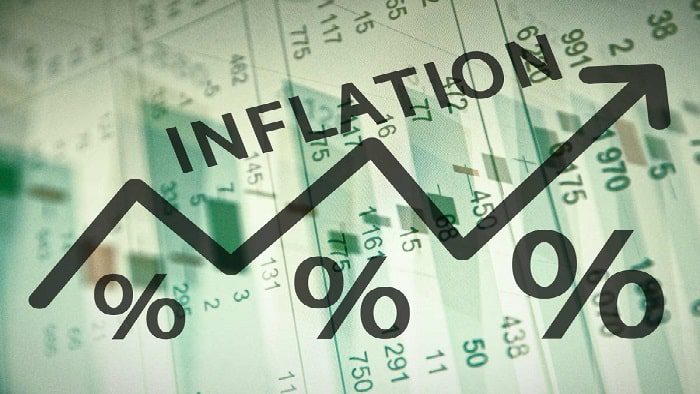There are many illusions surrounding how inflation is calculated, where it comes from, and how it affects the common person, despite the fact that it is one of the most urgent political and economic crises of the present. Inflation in Canada rose to 8.1% in June, marking a 40-year high. Even if there are indications that inflation may be slowing, many Canadians have reduced their spending, worked harder to earn more money, drained their savings, or increased their debt to deal with the increasing cost of living.
Let us have a look at some information about how inflation is calculated and how it has affected Canadians and the economy as a whole.
A broad increase in prices and the ensuing decrease in the money’s purchasing power are referred to as inflation. The majority of us can tell from our daily purchases whether inflation is high or low, but the inflation rate that is publicised in the media and discussed by policymakers is a unique metric developed by a small contingent of statisticians and data gatherers.
The Consumer Price Index (CPI), which is used by Statistics Canada to measure inflation, is created in two steps. First, Statistics Canada gathers more than a million price quotes on almost every product available in the nation.
Different methods of recording prices are used, and the regularity and area of price collection vary depending on the item. For instance, commodities with costs that fluctuate regularly, such as food or gas, or that vary by location, such as rent, are gathered more frequently than those with prices that are only collected once a year, such as tuition at a university or insurance premiums.
By evaluating each item’s price change against its proportion of overall consumer expenditure, Statistics Canada combines these prices in the second phase to get the all-item Consumer Price Index. Periodically, these weights are changed to account for modifications in consumer spending habits.
The most recent version, in 2021, contains various pandemic-related spending changes, including a reduced weight for food (15.75%) and transportation (16.16%), but an increased weight for housing (29.67%), which is reflected in the updated data.
In order to get a better understanding of slower-moving, long-term cost pressures, Statistics Canada and the Bank of Canada also track core inflation, which excludes the CPI’s most volatile categories (food and energy) from their calculations. Supply and demand play a role in setting prices. High inflation is a sign that the demand for goods and services is higher than supply across the economy.
Robust employment and wage growth, low loan rates, government payments related to the pandemic, and pandemic-related shifts in consumption towards commodities used at home are all contributing factors to the strong demand.
The pandemic’s effects on Chinese manufacturers, global supply chains, container shipping, trucking, and the Russian invasion of Ukraine have disrupted supplies, resulting in recent increases in food and energy prices worldwide.
Many Canadians believe that prices increased by more than 8.1% in the previous year. There are at least two explanations for this, aside from valid criticism of the CPI methodology in Canada.
First, surveys that capture the population’s diversity in spending patterns are used to measure consumer spending. However, these surveys condense this variation into a single weight matrix that treats every dollar of expenditure equally.
Your own budget could not closely resemble the weights used for the CPI because spending habits vary with age, income, region, household composition, and taste.
Second, people prefer to notice price increases over decreases for products they commonly buy, so they are more likely to detect price changes for such items. Because energy and food have had the highest price rises in the past year, consumers are less likely to notice the lower rate of inflation for furniture, technology, education, and health products that offset these.
People also pay close attention to rising house prices and interest rates, particularly in large cities, but the cost of owning a home is based on historic averages of housing prices (over 25 years) and interest rates (over 5 years), not on costs for someone purchasing a property today.
Regarding inflation, there are winners and losers. Others may gain by being able to raise their rates without fear of reaction from customers since everyone else is doing it, even though it may affect firms that wind up transferring cost increases on to their customers. High salary growth frequently, but not always, coincides with high inflation. People with wages that are not linked to inflation or who are unable to negotiate higher wages suffer compared to others whose incomes are at or above inflation. Even though many government benefits are adjusted for inflation, those with fixed incomes, such as the elderly, are sometimes disadvantaged by it.
Some asset classes perform better than others at adjusting to inflation. While assets with defined dollar figures like cash and bonds do not increase in value, the prices of real estate, stocks, fine art, and precious metals may.
As long as salaries or the prices of other assets remain stable, inflation can make it simpler to pay off debts. The government’s finances can also gain from inflation when tax revenues increase in relation to the debt’s dollar value.
Consumers don’t care where the current inflation comes from, but economic policy does. In order to reduce demand and avoid a recession, central banks and governments must choose between hiking interest rates, reducing spending or increasing taxes, or waiting and hoping that supply-side price pressures will naturally abate.
One can only hope that Canada avoids stagflation, the confluence of high inflation and high joblessness that troubled many economies in the late 1970s, and that this period of high inflation will end without requiring a significant recession.






















